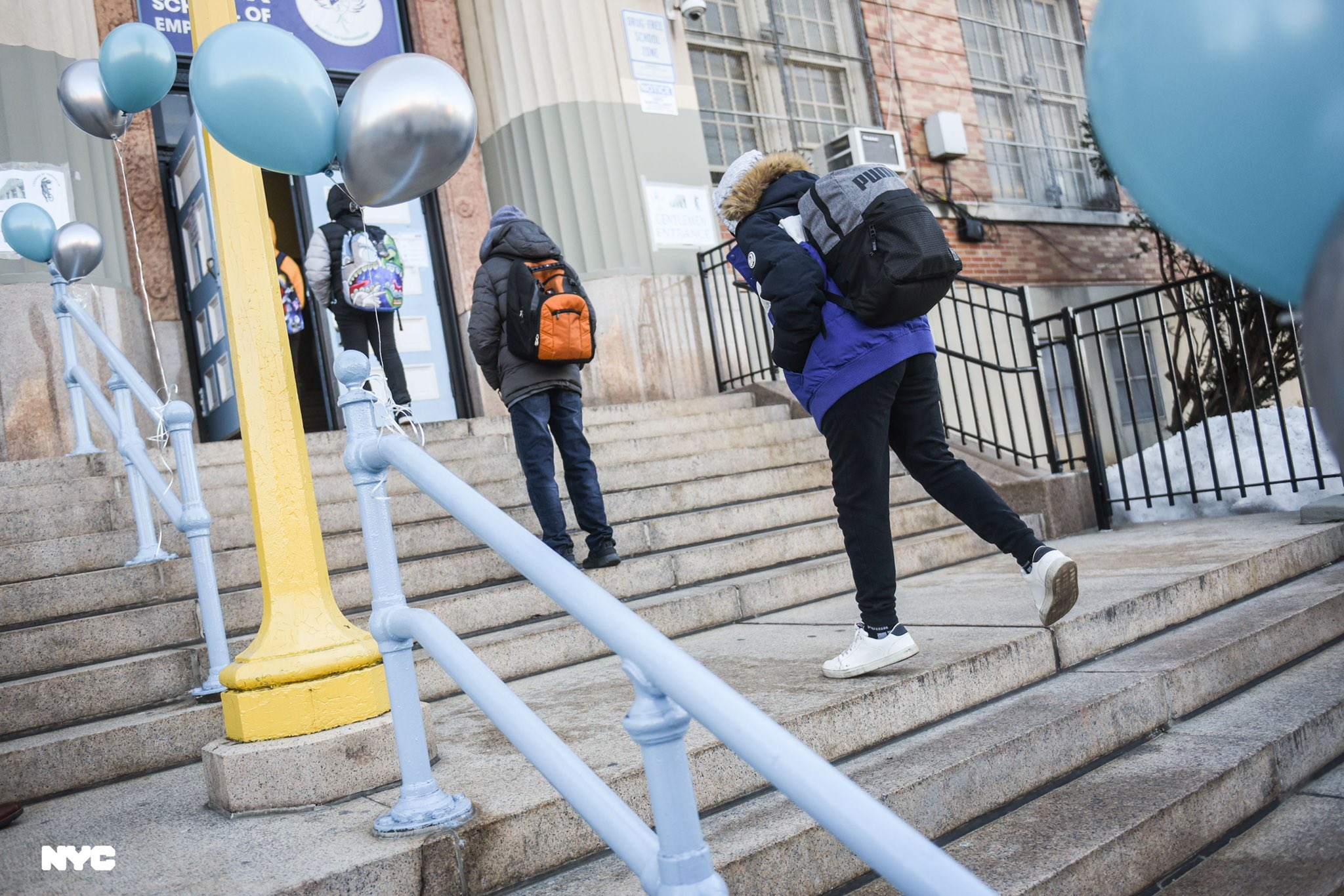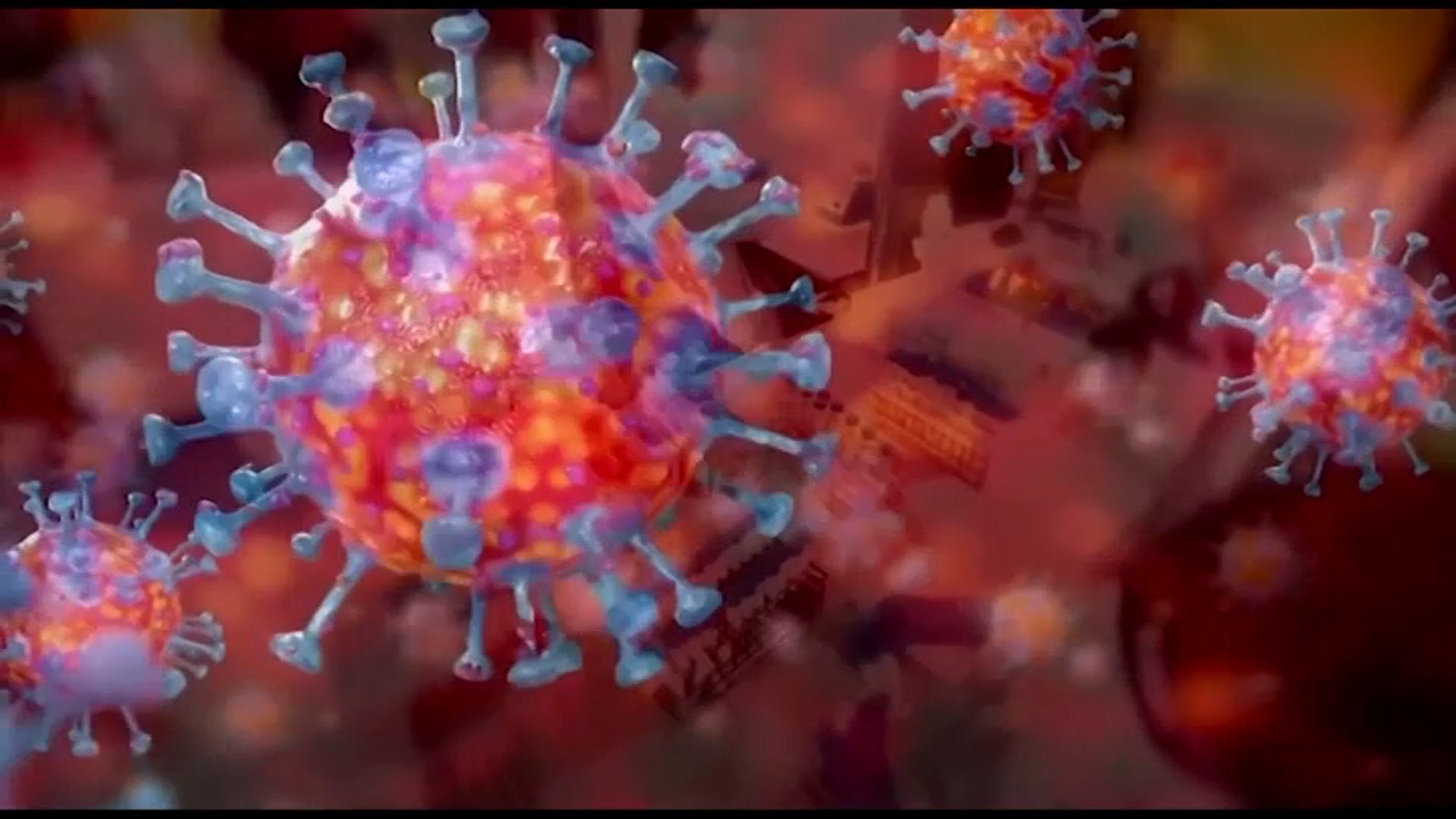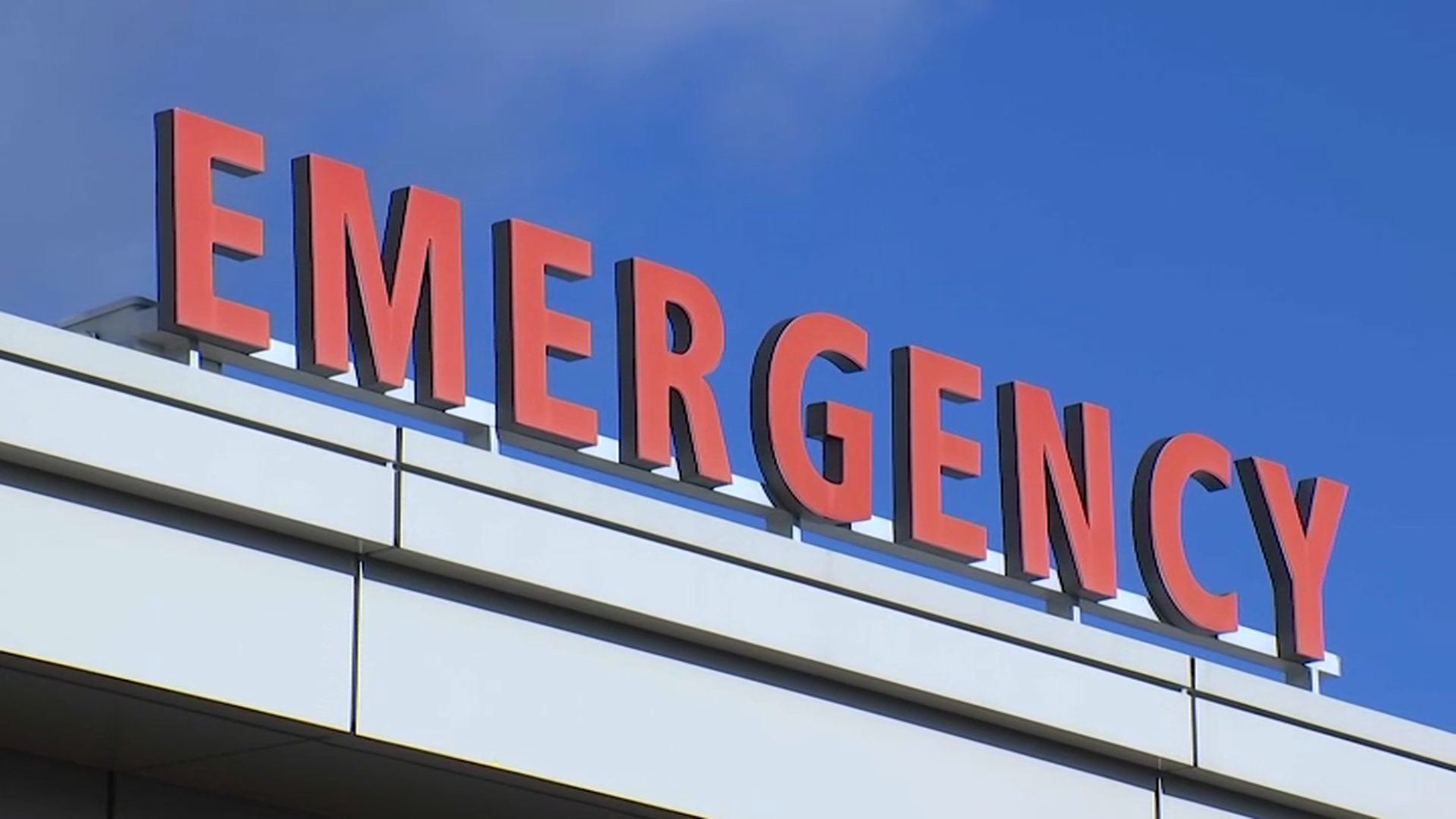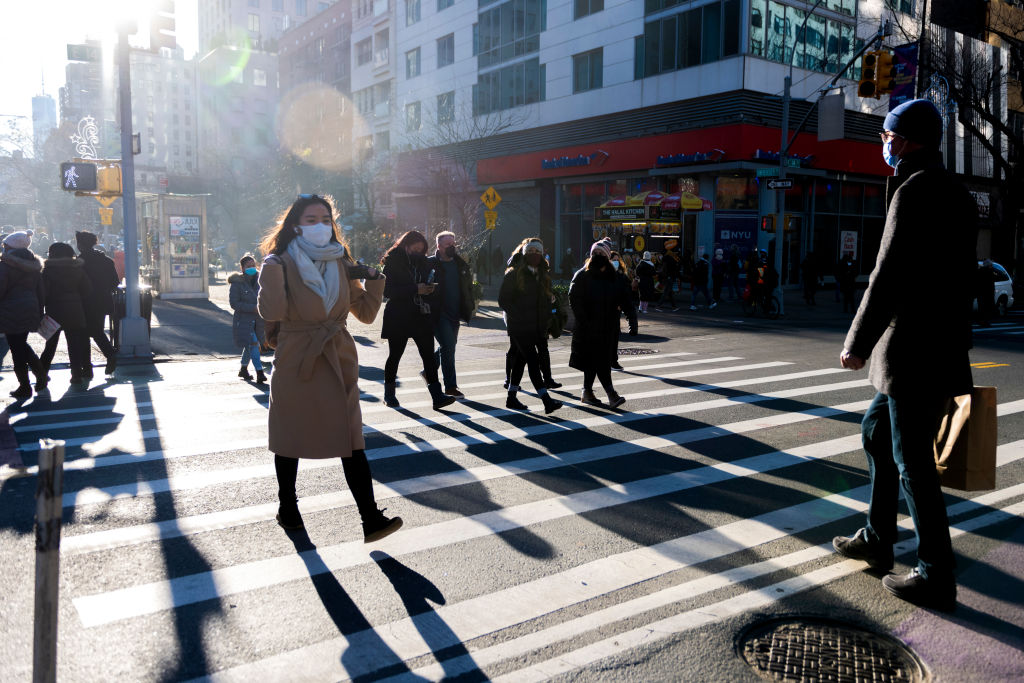What to Know
- NYC is preparing to transfer its reins of power to a new mayor as it fights its years-long COVID battles on a new and unpredictable front in the omicron variant; officials say the peak hasn't hit yet
- Mayor-elect Eric Adams detailed a six-pillar plan Thursday that relies on vaccinations, hospital support, testing, treatment, slowing the spread and enhancing school safety for children and staff
- He says he'll keep the private sector vaccine mandate, consider one for public school students and launch a color-based COVID "threat" assessment system with associated risk-based protocol changes
New York City's incoming leader, Mayor-elect Eric Adams, answered some critical outstanding questions about his COVID-19 battle plan on Thursday as he prepares to take the reins of a pandemic-weary city that finds itself immersed in the worst viral wave it has seen in nearly a year.
In his first major COVID briefing hours before taking office, Adams said Bill de Blasio's private-sector vaccine mandate will stay in effect to start the year.
He'll focus on "compliance, not punishment," as has been the case under the outgoing mayor, and forego fines as long as companies are committed to the goal.
Adams also addressed the potential for a student vaccination mandate in New York City public schools, the nation's largest district, amid concerns over quintupling rates of pediatric COVID hospitalizations across the city. The Democrat said his administration plans to make a decision on that in the spring, though he didn't give a specific deadline date. Should he decide to move forward, the mandate would take effect later in the year, possibly at the start of the 2022-23 academic calendar.
The former Brooklyn borough president and NYPD cop, who will be sworn in as the city's 110th mayor just after the ball drops in Times Square, says he will also review potentially adding boosters to existing vaccine mandates, vowing to push the city's at-times exhaustive pandemic recovery effort at a crucially vulnerable time.
Get Tri-state area news delivered to your inbox. Sign up for NBC New York's News Headlines newsletter.
"We can't shut down our city again. We can't allow the city to go further into economic despair," Adams said as he outlined a plan to combat an omicron-fueled surge now generating positives among one in five residents tested. "I want to be clear in the message about what our winter plan is going to look like."
Flanked by NYC Department of Health and Mental Hygiene Commissioner Dr. Dave Chokshi and incoming Commissioner Dr. Ashwin Vasan, who will lead the health department starting in March, Adams said he's been careful about wading too deep into pandemic plans before taking office so as not to stoke further confusion or anxiety.
He, Chokshi and Vasan shared a six-pillar approach for fighting COVID to start 2022, a multifaceted plan that will rely on vaccinations, hospital support, testing, treatment, slowing the spread and enhancing school safety for kids and staff alike.
On the latter, Adams said New York City's freshly announced plan to double in-school testing and increase reliance on at-home tests in a bid to keep schools open safely will stay in place when children return to class on Monday after the break. Learn more about that plan, which was just unveiled three days ago, here.
"This pandemic has not only impacted us physically, but it has impacted us emotionally -- and nothing is more alarming to New Yorkers as I move throughout the city than the feeling of uncertainty from the leadership," Adams said.
"What I've heard throughout this entire pandemic is the lack of proper communication and I'm not going to have that," he added, referring to the sweeping private-sector mandate announced on Dec. 6 ahead of a Dec. 27 start.
It affects an estimated 184,000 businesses. Questioned about the viability of the program after the initial announcement, Adams said he was concerned especially for smaller companies that may not have the staffing resources to accommodate shortages due to non-compliance with vaccine rules. That was before omicron began to debilitate workforces across the country, crippling everything from transit operations to Broadway's recovery and air travel, between unprecedented numbers of breakthrough infections and the highest spread rate of any COVID variant yet.
More Coverage
Businesses don't have to fire or discipline employees who aren't vaccinated, but they do need to keep them out of the workplace. The rules also call for detailed documentation of vaccine proof and follow-up on second dose appointments for businesses, adding another complex administrative layer for management.
"We're going to use a light-handed approach for those businesses that are attempting to comply," Adams said, but "reckless" and repeat violators will be subject to monetary penalties. Under Bill de Blasio's administration, noncompliance comes with fines up to $1,000 for first violations and escalating fines thereafter.
As for remote work options for the municipal workforce, which saw the vaccine mandate take effect in late October, two full months ahead of the one for private employers, Adams says he's open to some temporary accommodations.
Among the Adams administration's other core COVID objectives: reducing risk in shelters, nursing homes and jails through rapid isolation and quarantine; increasing the number of testing sites; seeking more access to monoclonal antibodies and oral COVID pills, two of which the FDA recently approved as viable treatment options; and focusing on equity and historically underserved communities throughout.
New York City will distribute another 2 million higher grade masks next month to places most in need, using community groups to deliver the equipment and the safety messages that go along with it. Adams also said he will introduce a new color-coded system to show the current level of virus threat. Each color will be associated with safety measures and COVID protocols that fit the threat, though full details on which metrics will be used to assess risk weren't immediately clear.
More clarity around that color-coded system, which to a degree reflects the targeted cluster zone plan former Gov. Andrew Cuomo unveiled last fall to localize restrictions in high COVID rate areas, are expected in the coming days.
Even though the omicron variant is associated with milder symptoms than delta, and could even mirror the common cold in terms of impact for many, those milder outcomes are highly contingent on vaccination -- and boosters.
High breakthrough rates have shelved vast numbers of workers citywide, while the rate of spread has caused significant increases in hospitalization among the 16% of New York City adults not yet fully vaccinated. It has also fueled more severe cases among unvaccinated children, who have seen COVID hospitalization increases far outpace the increases reported statewide in recent weeks.
The sheer volume of omicron-related spread alone has stoked extensive anxiety among the public and among hospital managers, who worry not primarily that they'll see floods of severe cases, but that mild case outbreaks among staff will slash the resources to handle the severe cases that do need hospital treatment.
As of Thursday, the city's rolling daily case average is up 109% over the averages for the prior four weeks, while hospitalizations have increased 41% by the same parameters. Deaths are on the rise, too, and will likely increase more over the coming weeks on account of the increases in COVID hospitalizations.
More on Omicron
“We should plan and prepare for a challenging few weeks, certainly through January with respect to what we’re seeing for the winter surge due to omicron," Chokshi said. “This is not something that we’re just going to take passively. This is something that we have agency over.”
Total new cases per 100,000 residents citywide soared by 57% in the last 10 days, while some of the highest transmission rates currently are being seen in boroughs that typically had the lowest infection rates over the course of the pandemic.
Take Manhattan, for example. About 2,136 of every 100,000 residents in the borough have tested positive in the last seven days, the city's latest transmission data shows. Its transmission rate is third behind Staten Island (2,482 per 100,000 over the last seven days) and the Bronx (2,212) despite having higher vaccination rates. It's also higher than the rolling citywide transmission rate (2,115 per 100K).
More Coverage
The toll of the last two pandemic years on the city continues to mount as year-over-year statistics bring some of the loss into sharper focus. Total New York City deaths increased by 51% in 2020 over 2019 (54,559 to 82,143), while total births declined by 9.4%. The numbers are still being analyzed as part of the city's annual vital statistics report, but New Yorkers know full well the start of 2021 was tragically similar to the devastating end of 2020. They're reliving some of that nightmare now.
“We have seen the devasting toll that the COVID-19 pandemic has caused in New York City and these new data from 2019 will help us better understand that toll," Chokshi said of that data. "New Yorkers have suffered so much. My heart is with all New Yorkers mourning a friend, family member or loved one lost to this terrible virus."
With deaths tending to lag hospitalizations, officials are keeping a close eye on ICU beds and hospital capacity. More than 1,000 patients statewide are in ICUs, with another 58 added to the total on Thursday. New York City has 3,565 COVID patients in hospitals, 418 of them in the ICU, according to the state's latest data.
Both numbers continue to trend sharply upward and have increased 507% and 267%, respectively, since Dec. 1 alone. Gov. Kathy Hochul says neither the city nor the state has yet experienced omicron's peak, though it's expected in short order.
"We're basically preparing for a January surge. We know it's coming. And we're naive to think it won't," Hochul said Wednesday as she reported a single-day case number that obliterated earlier records.
On that point, the nation's leading infectious disease expert, Dr. Anthony Fauci, agrees.
Omicron has fueled unprecedented daily infections across the U.S. as well. America set a record seven-day case average on Tuesday, according to NBC News data.
The average of 262,034 daily cases eclipsed the former record set on Jan. 11 of 252,776 new cases a day. It dropped a bit, according to the CDC, to around 240,400 cases per day on Wednesday, still up 60% over the previous week.
The omicron variant, the first local case of which was reported Dec. 2, accounted for 78% of genetically sequenced positive New York COVID samples uploaded to GISAID, the world's largest repository of COVID-19 sequences, over the last two weeks. That's up from 74.2% a day ago, 11.1% in the two-week period ending Dec. 18 and from 2.2% in the two-week period before that, state data shows.
CDC data for the latest two weeks says omicron could account for anywhere from 70% to 97% of current infections in the New York area for the week ending Dec. 25. Nationally, the prevalence is estimated to be as high as 74%, the agency says.
New York City's own data puts omicron's share of cases at just 30% of tested samples, up from 5% in the prior data update. Still, the health department admits its reporting can't keep up with omicron's rate of spread and instead refers to the CDC data for more accuracy.






